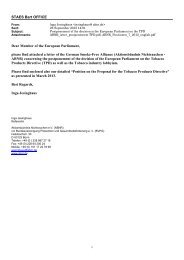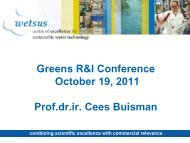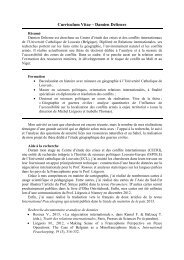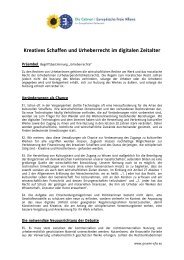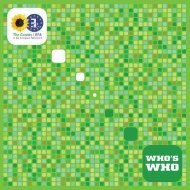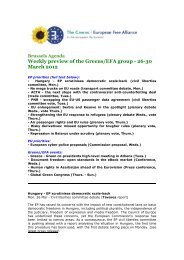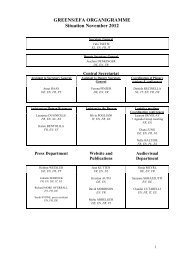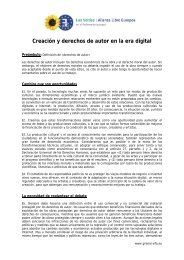Agro-Biotechnology: - The Greens | European Free Alliance
Agro-Biotechnology: - The Greens | European Free Alliance
Agro-Biotechnology: - The Greens | European Free Alliance
You also want an ePaper? Increase the reach of your titles
YUMPU automatically turns print PDFs into web optimized ePapers that Google loves.
14 | Cloned farm animals - a ‚killing application‘? | Technical problems<br />
<strong>The</strong> most sensitive life period of cloned cattle seems to end at the age of six<br />
months. As FDA (2008) concludes:<br />
“During the juvenile period (up to approximately six months of age), bovine<br />
clones continue to be at an increased risk of morbidity or mortality compared<br />
to animals produced by natural service or ARTs 16 . Estimates of mortality<br />
during this period range from 14 to 42 percent. <strong>The</strong>se deaths appear to be sequelae<br />
of the initial developmental abnormalities noted in the perinatal node<br />
that persist into the juvenile period (e.g. musculoskeletal defects, prolonged<br />
recumbency, enlarged umbilicus, respiratory distress, poor thermoregulation,<br />
cardiovascular failure, gastroenteritis).”<br />
Most cattle surviving to that age seem to be healthy. But open questions remain,<br />
since the parameters for meat and milk composition, blood parameters,<br />
and the level of gene expression are reported to be partially different from<br />
the parameters of cattle stemming from sexual propagation (for overview see<br />
Center for Food Safety, 2007). In some cases health problems in adult animals<br />
have also been reported (FDA, 2008, EFSA, 2008a). According to EFSA (2008a)<br />
the question of immunocompetence and the susceptibility of clones and their<br />
offsprings to diseases and transmissible agents under practical conditions also<br />
needs further investigation.<br />
<strong>The</strong> FDA (2008) also mentions the immune system as potentially affected by<br />
the SCNT process. <strong>The</strong> US authority refers for example to investigations by<br />
Ogonuki et al. (2002) and Ogura et al. (2002), that show immune disorders and<br />
severe respiratory health problems in mice derived from certain donor cells.<br />
So far only very few studies concerning animal health over whole life spans<br />
have been published. Remarkably, FDA (2008) even states that in the case of<br />
sheep there have been no published reports on the health status of live sheep<br />
clones since Dolly. Since most farm animals are used for the production of<br />
meat, it might be a challenge to identify the right scientific approach for investigating<br />
their life span and related animal health problems. As FDA (2008)<br />
states:<br />
“Currently, it is not possible to draw any conclusions regarding the longevity<br />
of livestock clones or possible long-term health consequences associated with<br />
cloning due to the relatively short time that the technology has existed."<br />
16 Assisted reproduction technologies such as embryotransfer



